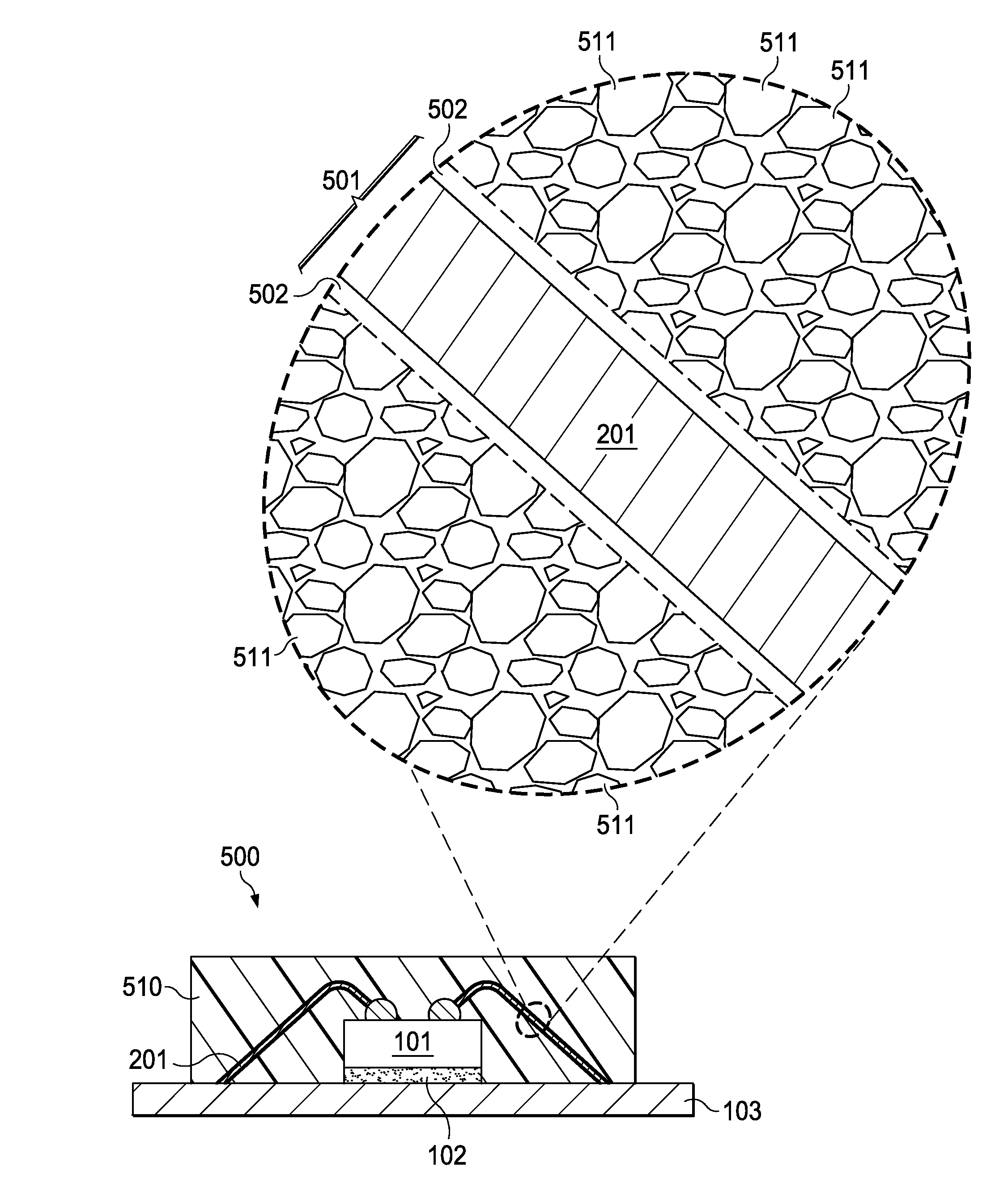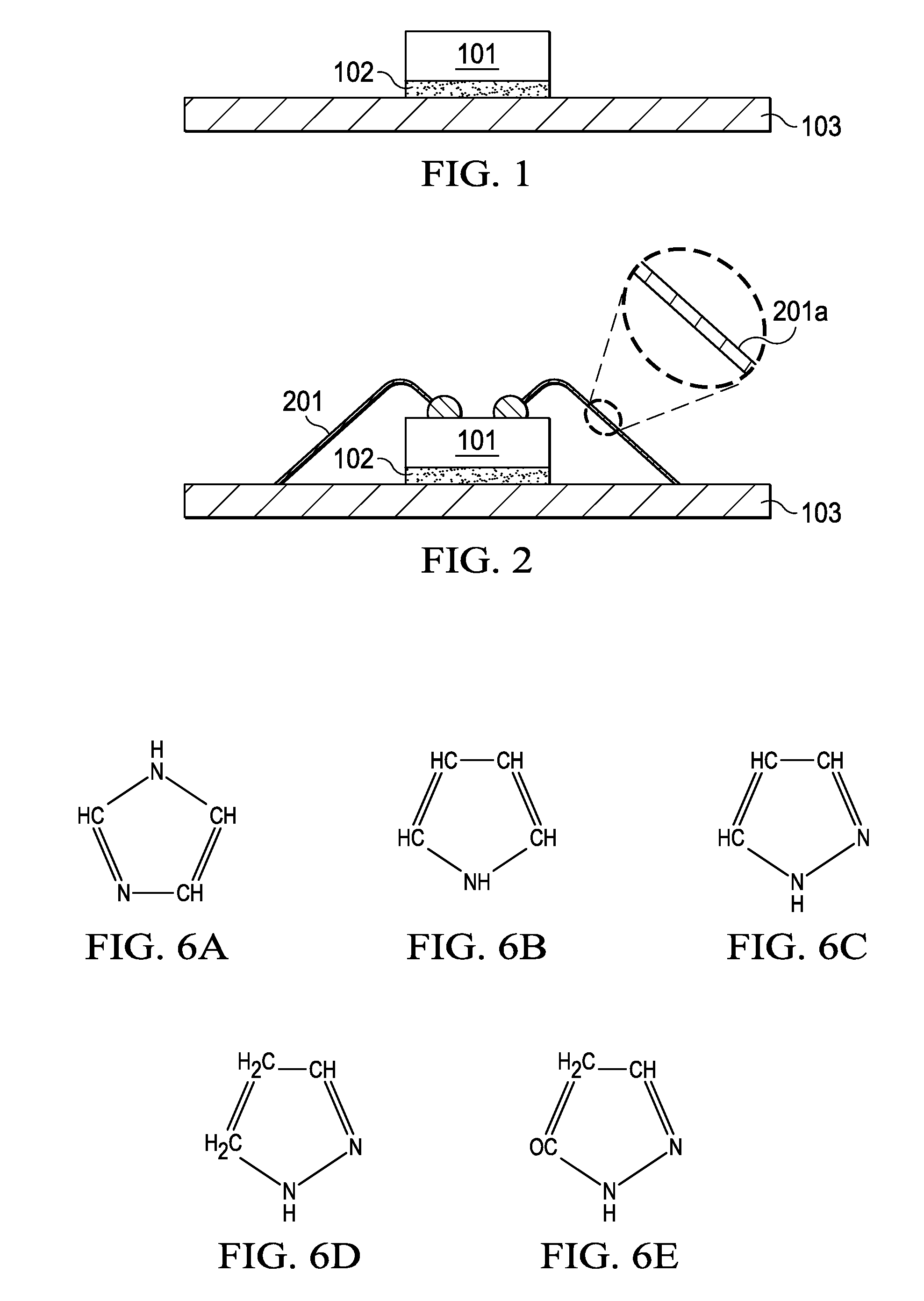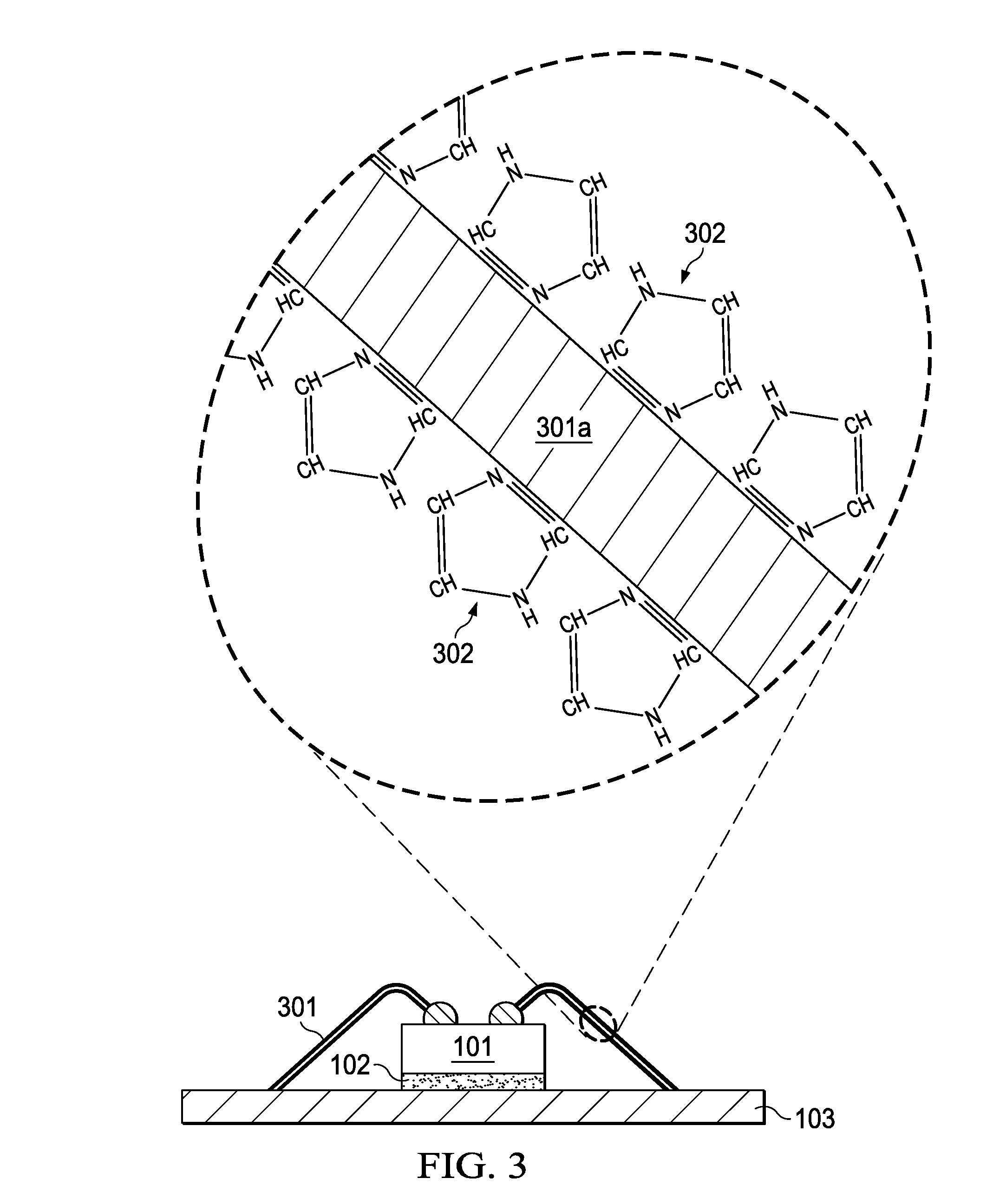Packaging a semiconductor device having wires with polymerized insulator skin
a technology of polymerized insulator skin and semiconductor devices, applied in the direction of plastic/resin/waxes insulators, basic electric elements, coatings, etc., can solve the problems of limiting the density of bonded wires, electrical shorts and device malfunction, and difficulty in forming free air balls, ball bonds, and stitch bonds, etc., to prevent electrical shorts, additional time, equipment or expenditure
- Summary
- Abstract
- Description
- Claims
- Application Information
AI Technical Summary
Benefits of technology
Problems solved by technology
Method used
Image
Examples
Embodiment Construction
[0024]An embodiment of the invention is a method for fabricating a plastic encapsulated semiconductor device with bonding wires, which are protected against electrical shorting if they should touch due to wire sweep during the encapsulation process. FIGS. 1 to 5 illustrate certain steps of the fabrication method using an exemplary device for demonstration. In FIG. 1, a semiconductor chip 101 is attached with an adhesive layer 102 to a substrate 103. Chip 101 has a plurality of bondable terminal pads. Chip 101 may be made of silicon, silicon germanium, gallium arsenide, III-V compounds, or any other material used in electronic technology. The terminal pads may be metal such as aluminum or copper, or any other material onto which conductive connectors can be affixed. Substrate 103 may be a metal leadframe or a multimetal-level substrate, laminated substrate, or any other suitable support structure.
[0025]FIG. 2 depicts the process step of attaching bonding wires 201 to the chip termina...
PUM
| Property | Measurement | Unit |
|---|---|---|
| liquefying temperature | aaaaa | aaaaa |
| diameter | aaaaa | aaaaa |
| diameter | aaaaa | aaaaa |
Abstract
Description
Claims
Application Information
 Login to View More
Login to View More - R&D
- Intellectual Property
- Life Sciences
- Materials
- Tech Scout
- Unparalleled Data Quality
- Higher Quality Content
- 60% Fewer Hallucinations
Browse by: Latest US Patents, China's latest patents, Technical Efficacy Thesaurus, Application Domain, Technology Topic, Popular Technical Reports.
© 2025 PatSnap. All rights reserved.Legal|Privacy policy|Modern Slavery Act Transparency Statement|Sitemap|About US| Contact US: help@patsnap.com



